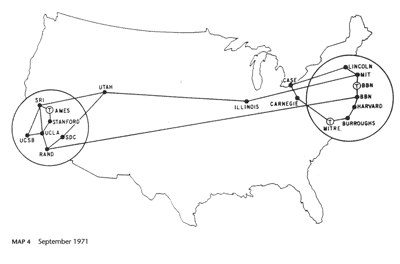We talk a lot about rules and best practices in email, but we’re mostly talking about “squishy” rules-of-thumb that are based on simplified models of how mail systems, spam filters, recipients, postmasters and blacklist operators behave. They’re the biology, ecology and sociology of the email ecosystem.
There’s another set of rules we tend to only mention in passing, if at all, though. They’re the steely, sharp-edged laws that control the email universe. They’re the RFCs that define how email works and make sure that mail systems written by hundreds of different people across the globe all work and all interoperate with each other.
Building a message from Zeros and Ones
RFC 5322 – Internet Message Format
This tells you everything you need to know about crafting a simple email, with a subject line, a sender, some recipients and a simple plain-text message. It’s also the foundation of all fancier emails. If you’re creating emails, this is where to start.
A little more than plain ASCII
RFC 2047 – MIME Part 3: Message Header Extensions for Non-ASCII Text
RFC 2047 is one small part of the MIME (Multipurpose Internet Mail Extensions) suite of protocols that allow you to include pictures and attachments and prettily formatted text and comic sans in your email. This part defines how you can put things other than the plainest of plain text in your subject lines or in the “friendly from” of your message. It’s what allows you to put Hiragana, or Cyrillic, or umlauts, or cedillas, or properly matched double quotes in your subject line. It also let’s you put hearts or smiley faces or other little pictograms there – but nothing this useful is going to be perfect.
RFC 2045 – MIME Part 1: Format of Internet Message Bodies
This shows how to send an image, or a plain text mail in a different character set, or an HTML mail. It doesn’t tell you how to send plain text and HTML, or to send HTML with embedded images, or a message with an attached document. For that you need…
Finally, Modern Email
RFC 2046 – MIME Part 2: Media Types
This builds on RFC 2045 to allow you to have many different chunks in a message – this is what you need if you want to send “proper” HTML mail with a plain text alternative, or if you want embedded images or attachments.
Getting From A To B
RFC 5321 – Simple Mail Transfer Protocol
A message isn’t much use unless you send it somewhere. RFC 5321 explains the mysteries of actually sending that message over the wire to the recipient. If you need to know about the different phases of a message delivery, what “4xx” and “5xx” actually mean, why there’s not really any such thing as a hard or soft bounce defined, just temporary or permanent failures, or anything else about actually sending mail or diagnosing mail delivery, this is your starting point.
The Rest Of The Iceberg
I’ve only touched on the very smallest tip of the email iceberg here. There’s much, much more – both in RFCs and ad-hoc non-RFC standards. If you’re interested in more, this is a decent place to start.
Read More